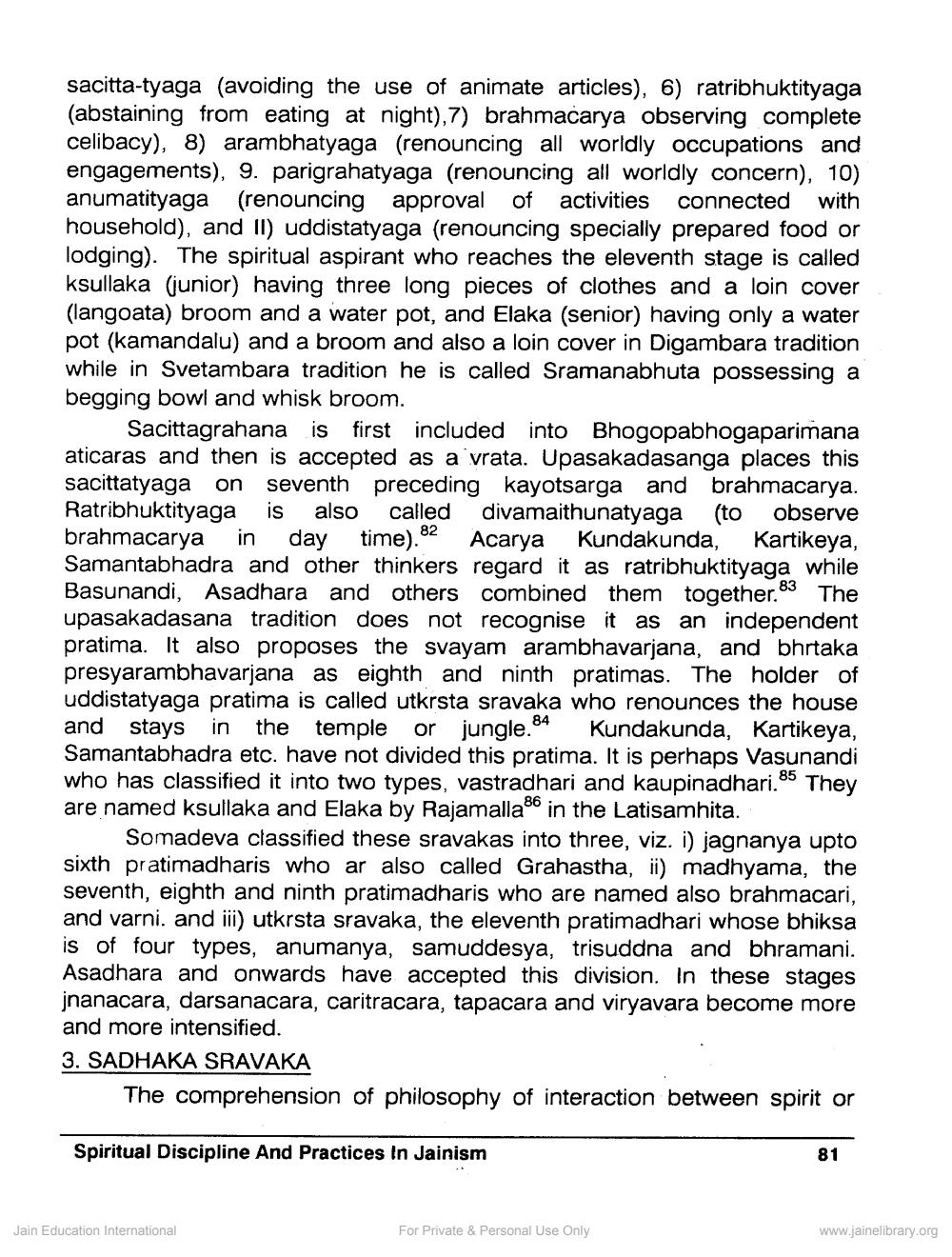________________
sacitta-tyaga (avoiding the use of animate articles), 6) ratribhuktityaga (abstaining from eating at night), 7) brahmacarya observing complete celibacy), 8) arambhatyaga (renouncing all worldly occupations and engagements), 9. parigrahatyaga (renouncing all worldly concern), 10) anumatityaga (renouncing approval of activities connected with household), and II) uddistatyaga (renouncing specially prepared food or lodging). The spiritual aspirant who reaches the eleventh stage is called ksullaka (junior) having three long pieces of clothes and a loin cover (langoata) broom and a water pot, and Elaka (senior) having only a water pot (kamandalu) and a broom and also a loin cover in Digambara tradition while in Svetambara tradition he is called Sramanabhuta po begging bowl and whisk broom.
Sacittagrahana is first included into Bhogopabhogaparimana aticaras and then is accepted as a vrata. Upasakadasanga places this sacittatyaga on seventh preceding kayotsarga and brahmacarya. Ratribhuktityaga is also called divamaithunatyaga (to observe brahmacarya in day time). 82 Acarya Kundakunda, Samantabhadra and other thinkers regard it as ratribhuktityaga while Basunandi, Asadhara and others combined them together. The upasakadasana tradition does not recognise it as an independent pratima. It also proposes the svayam arambhavarjana, and bhrtaka presyarambhavarjana as eighth and ninth pratimas. The holder of uddistatyaga pratima is called utkrsta sravaka who renounces the house and stays in the temple or jungle. 84 Kundakunda, Kartikeya, Samantabhadra etc. have not divided this pratima. It is perhaps Vasunandi who has classified it into two types, vastradhari and kaupinadhari.85 They are named ksullaka and Elaka by Rajamalla® in the Latisamhita.
Somadeva classified these sravakas into three, viz. i) jagnanya upto sixth pratimadharis who ar also called Grahastha, ii) madhyama, the seventh, eighth and ninth pratimadharis who are named also brahmacari, and varni. and iii) utkrsta sravaka, the eleventh pratimadhari whose bhiksa is of four types, anumanya, samuddesya, trisuddna and bhramani. Asadhara and onwards have accepted this division. In these stages jnanacara, darsanacara, caritracara, tapacara and viryavara become more and more intensified. 3. SADHAKA SRAVAKA
The comprehension of philosophy of interaction between spirit or
Spiritual Discipline And Practices In Jainism
81
Jain Education International
For Private & Personal Use Only
www.jainelibrary.org




